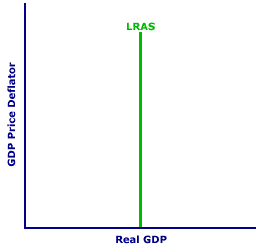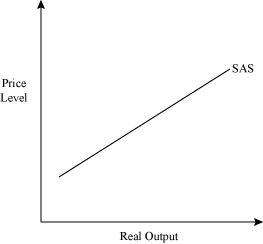- Fiscal policy
- Changes in spending
- 2 tools of fiscal policy
- taxes- government can increase or decrease takes
- spending- government can increase or decrease
- fiscal policy is enacted to promote our nations economic goals: full employment, price stability, economic growth
- Deficits, surplus and debt
- balanced budget
- revenues = expenditures
- Budget deficit
- revenues < expenditures
- Budget surplus
- Revenues > expenditures
- Government must borrow money when its runs a budget deficit
- individuals
- Corporations
- Financial institutions
- foreign entities or foreign government
- Fiscal policy two options
- Discretionary fiscal policy ( Congress )
- Expansionary fiscal policy- think deficit
- Contractionary fiscal policy- Surplus
- Non-Discretionary fiscal policy ( no action )
- Three types of taxes
- Progressive tax- takes a larger percent from higher income group
- Proportional taxes ( flat rate )-takes the same percent of income from all income groups
- Regressive taxes- takes a longer percentage from low income groups
- Contractionary fiscal policy ( the brake )
- law that reduce inflation, decrease GDP ( close a inflationary GDP )
- Decrease government spending
- tax increase
- combination of the two
- Expansionary fiscal policy ( the gas )
- laws that reduce unemployment and increase GDP ( close a recessionary gap )
- increase government spending
- decrease taxes on consumer
- combination of the two
- Automatic or built in stabilizers
- anything that increase the government budget deficit during a recession and increase its budget surplus during inflation without requiring explicit action by policymakers
- Transfer payment
- Welfare checks
- food stamps
- unemployment checks
- corporate dividends
- social security
- veterans benefits
Thursday, March 9, 2017
Unit 3 March 6
Unit 3 February 29
- Classical School
- Trickle down theory
- help the rich first and then everyone else
- in the LR, the economy will balance at full employment output
- the invisible hand
- Keynesian School
- AD is the key, not AS
- in the LR, we are dead
- leaks cause recessions
- savings cause recession
Unit 3 February 27
- Reason why prices tend to be Sticky or inflexible in a demand direction
- Fear of price war
- Wage control
- Menu cost
- Moral effort and productivity
- Range 1 ( Horizontal Range )
- output is low relative to the economies fully outpt
- Unemployment increases and so does GDPr
- Range 2 ( Intermediate Range )
- output expands as spending increases
- Range 3 ( Vertical/ Classical range )
- In the long run the aggregate supply curve is vertical, because the only effect of increase of AD when we are already at full employment an increase in the price level
- Firms can respond to increase in demand by increasing output
Unit 3 February 24
- The spending multiplier effect
- An initial change in spending ( C, Ig, Xn ) causes a larger change in aggregate spending or aggregate demand
- Multiplier = Change in AD/ Change in spending
- Multiplier = Change in AD/ Change in C, Ig or Xn
- Why does this happen
- Expenditure and income flow continously which sets off a spending increase in the economy
- Calculating the spending multiplier
- The spending multiplier can be calculated from the MPC or MPS
- Multiplier = 1/1-MPC or 1/MPS
- Multipliers are ( + ) when there is an increase in spending and ( - ) when there is an decrease
- When government taxes, and the multiplier works in reverse
- because now is leaving the circular flow
- Tax multiplier ( its negative )
- -MPC/1-MPC or -MPC/MPS
- if there is a tax cut, then the multiplier is +, because there is now more money in the circular flow
Unit 3 February 23
- Consumption and Savings
- Household Spending
- The ability to consume is constrained by
- The amount of disposable income
- The propensity to save
- Do households consume if DI = 0
- Autonomous Consumption
- Dissavings
- APC = C/DI = % DI that is spent
- Savings
- Household NOT spending
- the ability to save is constrained by
- The amount of disposable income
- The propensity to Consume
- Do households save if DI = 0
- No
- APS = S/DI = % of DI that is not spent
- APC and APS
- APC + APS = 1
- 1 - APC = APS
- 1- APS = APC
- ADC > 1: Dissavings
- -APS : Dissavings
- MPC and MPS
- Marginal propensity to consume
- Change in C/ Change in DI
- % of every extra dollar earned that is spent
- Marginal propensity to save
- Change in S/ Change in DI
- % of every extra dollar earned that is saved
- MPC + MPS = 1
- 1-MPC = MPS
- 1-MPS = MPC
- Determinants of C and S
- Wealth
- Expectation
- Household debt
- Taxes
Tuesday, March 7, 2017
Unit 3 February 21
- What is investment
- money spent or expenditures on
- new parts ( factories )
- Capital equipment ( Machinery )
- Technology ( hardware and software )
- New homes
- Inventories
- Expected rate of return
- How does business make investment decisions
- cost/ benefit analysis
- How does business determine the benefit
- expected rate of return
- How does business count the cost
- Interest costs
- How does business determine the amount of investment they undertake
- How do you compute the real interest rate (r%) - r% = i% - 𝚷% ( real GDP = Nominal GDP -Inflation)
- What then, determines the cost of an investment
- What is the slope of the investment demand curve
- Downward Sloping
- Why
- when interest rates are high, fewer investment are profitable; when interest rates are low, more investment
- Shift in investment demand
- Cost of production
- Business taxes
- Technological
- Stock of capital
- Expectations
- Aggregate Supply- The level of real GDP (GDPr) that firms will produce at each price level
- Long- Run Vs. Short- Run
- Long Run- Period of time where input prices are completly flexible and adjust to changes in price level
- The long run, the level of real GDP supplied is independent of the price level
- Short Run- period of time where input prices are sticky and do not adjust to changes in the price level
- In the short run, the level of real GDP supplied is directly related to the price level
- Long- Run Aggregate Supply (LRAS)
- The long- run aggregate supply or LRAS marks the level of full employment in the economy
- Short-Run Aggregate supply (SRAS)
- Because input prices are sticky in the short-Run, the SRAS is upward sloping
- Changes in SRAS
- An increase in SRAS is seen as a shift to the right
- A decrease in SRAS is seen as a shift to the left
- The key to understanding shift in SRAS is per unit cost of production
- Per unit production cost = Total input / Total output cost
- Determinants of SRAS
- input prices
- productivity
- Institutional Environment
- input rices - domestic resource rate
- wages ( 75% of all business costs )
- Cost of capital
- Raw materials ( Commodity prices )
- foreign resource prices
- strong money = lower foreign prices
- Weak money = Higher foreign resource prices
- Market power
- monopolies and cartels that control resources control the prices of the resources
- increase in resource prices = SRAS shift right
- Decrease in resource prices = SRAS shift left
- More productivity = lower units production cost = SRAS shift left
- Lower productivity = higher unit production cost = SRAS shift right
- legal- institutional environment
- taxes and subsides
- taxes ( money to government ) on business increase per unit production cost = SRAS shift left
- Subsides ( money from government ) to business reduced per unit production cost = SRAS shift right
- Government Regulation
- Government regulation creates a set of compliance = SRAS shift left
- Deregulation reduces compliance cost = SRAS shift right
Unit 3 February 16
- Determinants of AD
- Consumption (c)
- Gross private Investment (Ig)
- Government Spending (G)
- Net exports (Xn) = Exports - Imports (X-M)
- Change in consumer spending
- Consumer wealth (Boom in stock market)
- Consumer Expectations (people fear a recession)
- Household indebtedness ( more consumer debt)
- Taxes (decrease in income taxes)
- Change in investment spending
- Real interests rates (price borrowing money)
- Future Businesses expectations ( high expectations )
- Productivity and technology (new robots )
- Business taxes
- Change in Government spending
- war
- Nationalized health care
- Decrease in defense spending
- Change in net exports (X-M)
- Exchange rates
- if U.S. dollar depreciates relative to the euro
- National Income compared to abroad
- if a major importer has a recession
- if the U.S. has a recession
- AD = GDP = C + Ig + G + Xn
- Government Spending
- more government spending ( AD Shifts right )
- Less government spending ( AD shifts left )
Unit 3 February 17
- Aggregate Demand Curve
- AD is the demand by consumes, business, government and foreign countries
- Changes in price level cause a move along the curve not a shift of the curve
- AD= C + I + G + Xn
- A multiplier effect that produces a greater change than the original change in the 4 components
- increase in AD = AD shift to the right
Subscribe to:
Comments (Atom)





